Posted in category "Bishops"
Cardinal Nicolas de Jesus Lopez Rodriguez, 79, the head of the Catholic church in the Dominican Republic, is back in the news after ripping U.S. ambassador James “Wally” Brewster about comments he had made about corruption in the Dominican Republic.
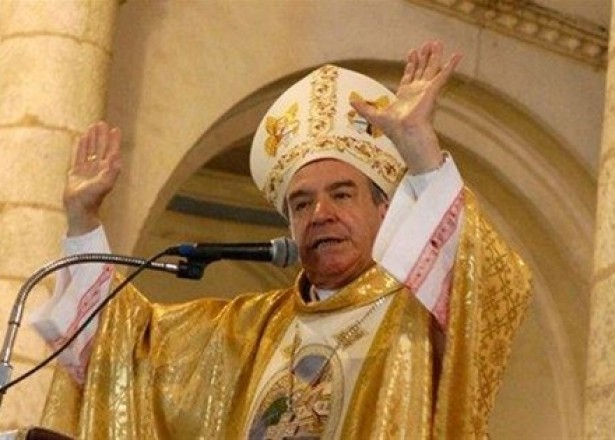
In a meeting with reporters after Mass, Cardinal Lopez accused Brewster of promoting a gay rights agenda on Dominican soil. “That man needs to go back to his embassy,” he sneered. “Let him focus on housework, since he’s the wife to a man.”
Lopez’s comments came after Brewster accused police officers of threatening and assaulting several U.S. investors who were attending a conference organized by the local government.
“Imagine the horror I felt when I got a call from one of them, telling me they had been stopped by a uniformed police officer, that they had a weapon pointed at them and that they were forced to turn over their wallets,” Brewster said.
This isn’t the first time Cardinal Lopez has been nasty with Ambassador Brewster in public.
In June 2013, when Wally Brewster was named ambassador, Lopez called him a faggot in a news conference, and said, “I don’t agree in the least with that kind of preference (homosexuality).”
Santo Domingo auxiliary bishop Pablo Cedano also weighed in, adding the naming of the new U.S. ambassador “is far from our cultural reality” and “hopes” that Brewster doesn’t come to the country, because if he does, he “will suffer and have to leave.” Choosing a former gay activist as ambassador to the Dominican Republic “was a lack of sensitivity, of respect by the United States.”
One day in 2012, prominent television reporter, Ms. Nuria Piera, received a tip that many afternoons the papal nuncio drank beer at a waterfront restaurant and then went off with young boys. The restaurant was in an area of the national capital, Santo Domingo, known for male prostitutes.
Ms. Piera sent a video crew to keep watch. The crew shot some footage of Archbishop Wesolowski drinking alone and walking along the promenade. When he noticed their presence, he went over to their car and smacked his hand against it, asking why they were following him. After that incident, Ms. Piera said, he disappeared from the waterfront. “I suspected that there may have been a leak from our own office,” Ms. Piera said.
On June 24, 2013 Francisco Javier Occi Reyes, a Roman Catholic deacon and sometime sex partner for Archbishop Wesolowski, was arrested by police for solicitation of minors and taken to jail. He later told police at the time of his arrest he was “pimping” a youngster for Wesolowski, who was waiting in his car nearby. 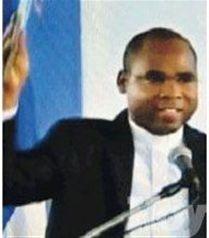
The deacon said Wesolowski left the scene, and said nothing because he thought the church’s influence would get him out of jail.
But when no one came to bail him out–and the deacon understood he would stay in jail a long time before trial–he sent a letter to be hand delivered to Wesolowski’s office. The letter, dated July 2nd, may have expressed contrived or genuine remorse, but either way it ended Wesolowski’s diplomatic career. 
“We have offended God” and the church, the letter said, by sexually abusing children and adolescents “for crumbs of money.” The deacon wrote that he had agreed to find child victims for the nuncio so that “your sexual appetite can be satiated,” but that he was now asking God for forgiveness.
The deacon sent copies of the same letter to Cardinal Lopez and also his bishop, Gregorio Nicanor Pena Rodriguez. The cardinal quietly carried the letter and other evidence to the Vatican, where he met directly with Pope Francis.
Neither the cardinal, nor other church officials, reported the allegations of abuse to the authorities.
On August 23, 2013 Archbishop Wesolowski was secretly recalled to Rome. Six days later, Cardinal Lopez called the papal nuncio “a great friend and promoter of peace.” Lopez told news media he didn’t know what prompted the call, and suggested it might have been the result of a personal conflict with Puerto Rico’s archbishop, Roberto Octavio Gonzalez Nieves.
Interesting side story…Archbishop Gonzalez has been accused by Vatican emissaries of allegedly protecting pedophile priests, abusing his power, promoting Puerto Rican independence from the U.S., and supporting a law that would grant same-sex couples living together the rights of inheritance, hospital visits and health coverage. Wesolowski was among those pressuring him to step down as Puerto Rico’s archbishop and take a position elsewhere. The ultra conservative Life Site News has an interesting story on Archbishop Gonzalez’ political battles.
The attorney general for the Dominican Republic, Mr. Francisco Dominguez Brito, and the district attorney for Santo Domingo, Ms. Yeni Berenice Reynoso Gomez, both said they learned of the sexual abuse allegations against Archbishop Wesolowski from Ms. Piera’s television reports, which were broadcast in September 2013. The program included a 13-year-old boy who said he had been abused.
Ms. Reynoso said her investigators had identified several children aged 12-17, mainly from very poor neighborhoods, with whom the papal nuncio had sexual contact, but indicated there were likely more.
The 17-year-old had epilepsy, and the nuncio gave him medicine in exchange for sex acts, starting when the boy was 13. “This is the most terrible case that I have ever seen,” said the district attorney. “He was abusing kids who were living in extreme poverty, in exchange for pills for a boy’s illness.”
“He definitely seduced me with money,” 17-year-old Francis Aquino Aneury told The New York Times. He was 14 when the man he met shining shoes began offering him increasing larger sums for sex acts. “I felt very bad. I knew it wasn’t the right thing to do, but I needed the money. Aquino told the Times reporter that Wesolowski would watch him masturbate, would touch him, or touch himself. Another report mentioned Wesolowski would film oral sex acts on his cell phone.
Ms. Reynoso felt strongly that the case should have been prosecuted in the Dominican Republic, not the Vatican. “These children who were abused, and their families, and the Dominican society, have a legitimate right to see Jozef Wesolowski judged by a jury–not as a diplomat, but for what he really is,” she said. “A child abuser.”
Soon after the television report and other local media coverage on allegations of sexual misconduct by Archbishop Wesolowski and Wojciech Gill, a fellow Polish priest and friend, Cardinal Lopez confirmed he had gone to the Vatican to address the matter, but left it to the Vatican to investigate.
Archbishop Wesolowski conveniently departed in late August before the news story broke in early September.
After the story broke in the Dominican Republic news media, and it was clear Archbishop Wesolowski would not be back, Cardinal Lopez began to voice support for the investigation of the former papal nuncio and other pedophile priests.
In a letter signed as archbishop of Santo Domingo and as president of the Dominican bishops conference, Cardinal Lopez called for a “purification of the Church and for the removal of those who unworthily exercise this ministry and do not deserve to be called priests.”
“In recent weeks,” the letter sent on, “the public has been shocked repeatedly by embarrassing behavior in different areas of the country by clergy members of the Catholic Church, who we expect and ought to behave differently,” stated Cardinal Lopez.
Without mentioning any specific names or cases, the cardinal prayed, “Jesus, forgive them, because they do not know what they are doing and they are hurting the heart of the Church and faith of many people.”
The “root problem” of clergy abuse, Cardinal Lopez said, “is an undetermined number” of candidates preparing for priesthood who “do not have an authentic vocation” and who “during formation are able to feign something they are not, and if formation directors are not careful, they sneak into the clergy, and later the bishops pay the consequences for their excesses and turmoil.”
After his recall to the Vatican, Archbishop Wesolowski was given a few months to prepare for his defense. He was tried first by a canonical court, and on June 27, 2014 he was found guilty of sex abuse by the Congregation for the Doctrine of the Faith. He was laicized shortly following the decision.
On September 23, 2014, Vatican criminal proceedings against Wesolowski started. He was allowed to remain under house arrest because of medical reasons.
Vatican prosecutors accused Wesolowski of sexually abusing children in the Dominican Republic where he worked from 2008 to 2013 at the Vatican’s ambassador. They said he picked up poor boys on the waterfront, paid them for sex acts, and took pornographic photos of them. He was also accused of offending “Christian morality” by repeatedly logging into pornographic sites involving minors in the Dominican Republic and the Vatican following his recall.
Wesolowski was indicted in June 2015 and a trial date set for July 11, 2015.
On July 10th, Wesolowski collapsed at his residence and was admitted to an intensive care unit in an Italian hospital for an “unexpected illness.” The trial was postponed, and no new date was set for its resumption. He was treated for “a serious drop in blood pressure, due to the heat and tension, as well as his age.”
Jozef Wesolowski died at his residence on August 28, 2015. He was 67.
A statement released by the Holy See Press Office shared the news, stating the initial investigations done by Vatican authorities “indicate that he died of natural causes” in the early hours of the morning.
His body was found at about 5 AM by a priest who lived in the same building, which houses the Franciscans who hear confessions in St. Peter’s Basilica, as well as offices of the Vatican police force. Wesolowski was in front of a TV which was on.
During Wesolowski’s funeral in a Vatican administrative palazzo’s chapel, eight minutes of silence replaced a homily. Celebrating the Mass was a Polish prelate, Monsignor Konrad Krajewski, who is Pope Francis’ chief alms-giver. He was returned to his native Poland for burial. 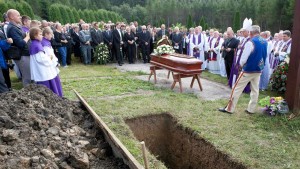
The results of the autopsy were released on December 14, 2015. The conclusion of the report, which was submitted to the Chancellor’s Office of the Vatican City State Court of the First Instance, confirmed what had already emerged from the post mortem examination: Msgr. Jozef Wesolowski died of heart failure.
Another convenient departure?
Since Msgr. Wesolowski was not brought to trial, there were no ugly details, names, dates, faces, encounters for the press to paw over. His story faded quietly with the end of the year.
While most of the world is thrilled by Pope Francis, a few are not. One of the most outspoken is Raymond Cardinal Burke, 66. 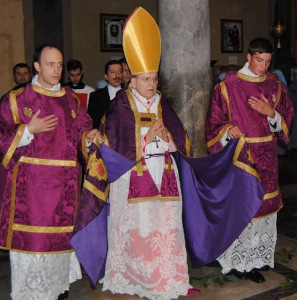
Cardinal Burke is a voice of conservatism in the Roman Catholic Church and American politics, and a prominent devotee of the Tridentine Mass. He is intent on the “reform of the reform” of Vatican II.
Many photos of Cardinal Burke feature him in full regalia, a billowing cappa magna, lace rochet, velvet gauntlets, a towering mitre–the image of royalty, privilege and authority is unmistakable. That style is the polar opposite of Pope Francis, who is urging clerics to be pastors who “smell like their sheep.” 
Over the last year and a half Cardinal Burke has made a series of statements to the press challenging Pope Francis’ shift in pastoral style. In an interview with the Spanish Catholic weekly Vida Nueva, published on October 30, 2014, Burke insisted he was not speaking out against the pope personally but raising concern about his leadership.
“Many have expressed their concerns to me. At this very critical moment, there is a strong sense that the church is like a ship without a rudder,” Burke said. “Now, it is more important than ever to examine our faith, have a healthy spiritual leader and give powerful witness to the faith.” 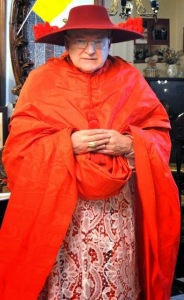
The “rudderless ship” remark was probably the last straw in a string of provocative challenges from Cardinal Burke. On November 8, 2014 he was officially removed as head of the Vatican’s highest judicial authority, known as the Supreme Tribunal of the Apostolic Signatura. Obviously, he didn’t get the hint after he was dropped from the Congregation of Bishops in December 2013. Cardinal Burke no longer holds any influential Vatican posts. 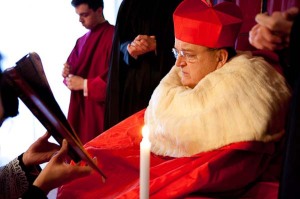
At the same time, his appointment as Patron of the Sovereign Military Order of Malta was announced. The Knights of Malta were founded in 1048 and recognized as a lay religious order by Pope Paschal II in 1113. It has a very elaborate hierarchy, with religious at the top, nobles next, and larger groups of knights and dames of common birth below them in their own separate categories and classes. Each group has its own insignia, making the classes of persons easily recognizable.
Pope Francis has done Cardinal Burke a favor. He will have ample opportunity to wear the finery he enjoys and not raise an eyebrow. The people around him will be dressed in equally rich, dramatic and historically meaningful capes and crosses. He will also feel at home with people who are used to looking backward to the Middle Ages. 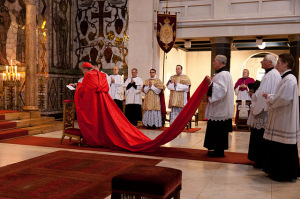
On September 25, 2014, Pope Francis removed Bishop Rogelio Ricardo Livieres Plano, 69, head of the Diocese of Ciudad del Este, the second largest city in Paraguay. He took the action to preserve the “unity” of both the bishops and the faithful” and “under the weight of serious pastoral concerns,” said the Vatican in a statement. 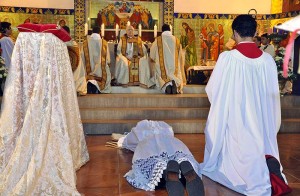
Bishop Livieres, a member of Opus Dei, repeatedly feuded with the other bishops in Paraguay over seminarian formation, liberation theology and pastoral tone.
He was appointed to the diocese by St. John Paul II in 2004 with a mandate, communicated to him by the papal nuncio at the time, to oppose Paraguayan bishops’ “monolithic” support for liberation theology. He said Pope Benedict XVI personally told him in 2008 that liberation theology was “the problem in all of Latin America.”
But Pope Benedict “had a very different orientation from the present pontificate,” the bishop said. “This is a pontificate opposed to the previous pontificate.”
Soon after he was installed, Bishop Livieres opened his own diocesan seminary in Ciudad del Este, marked by a more orthodox style then the main seminary in Paraguay’s capital, Asuncion.
The man he appointed as his Vicar General, a position often responsible for the oversight of clerical sexual abuse, is the Rev. Carlos Urrutigoity. Fr. Urrutigoity has been accused multiple times of sexual abuse of high school boys and seminarians in the guise of spiritual direction.
Fr. Urrutigoity has an interesting story of his own that mixes ultra orthodoxy with homo-erotic overtones and encounters. He began his clerical career in the schismatic Society of St. Pius X. 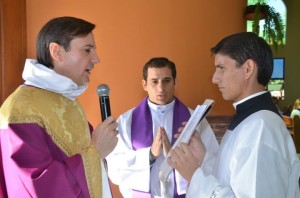
In 2002, Urrutigoity was accused of sexual abuse of young men in a highly publicized lawsuit in the diocese of Scranton, PA. He and another priest, Eric Ensey, were suspended by then-Bishop James Timlin amid allegations that they had sexually molested students at St. Gregory’s Academy, a high school for boys operated by the Priestly Fraternity for St. Peter, an order devoted to the Latin Mass. The diocese reached a $400,000 plus settlement in the case in 2006. St. Gregory’s Academy closed in 2012.
A statement on the Diocese of Scanton, PA website describes Fr. Urrutigoity as a “serious threat to young people” and says that Bishop Timlin’s immediate successor, Bishop Joseph Martino, cautioned Bishop Livieres against accepting Fr. Urrutigoity as an active priest.
“Bishop Martino…carefully and consistently expressed his grave doubts about this cleric’s suitability for priestly ministry and cautioned the bishop of the Diocese of Ciudad del Este, Paraguay, to not allow Father Urrutigoity to incardinate into his diocese,” the statement reads.
When the archbishop of Asuncion, Eustaquio Cuquejo Verga, asked Bishop Livieres to investigate Fr. Urrutigoity, Livieres fired back publicly saying, “I think Cuquejo is a homosexual” to Paraguayan TV station La Tele.
In July 2014, Pope Francis sent a cardinal and an archbishop to investigate the Ciudad del Este diocese. They were looking into accusations of embezzlement in the management of the diocese’s finances, severing ties with other bishops, and protecting and promoting Fr. Carlos Urrutigoity in the face of numerous warnings by other dioceses.
Shortly after the July 21-26 visit, the Vatican ordered Fr. Urrutigoity be removed from ministry, and severely restricted the activities of Bishop Livieres, including removing his authority to ordain priests.
Although the Vatican did not specify Bishop Livieres’ financial irregularities, he was allegedly accused of using funds destined for needy and abandoned children, single pregnant women, and women subject to domestic violence, to cover phone, gas and other expenses at the seminaries he opened.
Fr. Ciro Benedettni, deputy head of the Vatican press office, said issues surrounding Fr. Urrutigoity were part of the reason for the removal of Bishop Livieres, but the main motive was to put a stop to the infighting among Paraguayan bishops over the training of priests and the mismanagement of seminaries set up by Bishop Livieres.
The downfall of Bishop Livieres has several similarities to the case of Bishop Robert Finn of the Kansas City-St. Joseph, MO diocese:
-Both bishops are members of Opus Dei.
-Both were outspoken promoters of Catholic orthodoxy.
-Both protected priests credibly accused of sexual abuse.
Either something doesn’t add up morally, or priestly sexual peccadilloes count for much less than doctrinaire correctness to Catholic tradition.
Further Reading:
“Purgatory Begins for Bishop Finn”
“The Curious Case of Carlos Urrutigoity”
“Rogue Priest, formerly of the Diocese of Scanton, Living the Good Life in Paraguay”
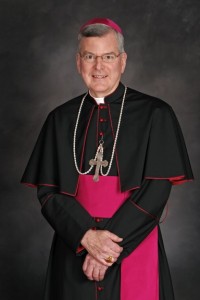
In February 2006, John C. Nienstedt, Bishop of New Ulm, Minnesota, dedicated his monthly column to “Moral Corruption.”
Brokeback Mountain
“Two recent events alerted me to the fact that our society is indeed on a slide toward moral corruption,” he began. The first dealt with assisted suicide, “the second event involves the movie, ‘Brokeback Mountain,’ which I do not recommend for your viewing,” he cautioned. 
“Hollywood seeks to make this film into a contemporary version of ‘Romeo and Juliet’ with, of course, the necessary changes in gender. The story is about two lonely cowboys herding sheep up a mountain range. One night after a drinking binge, one man makes a pass at the other and within seconds the latter mounts the former in an act of wanton anal sex. This sets off a lustful passion in both men that ‘grabs hold of them’ and they find impossible to control.”
“I wonder if the trend makers in Hollywood really think they know where this is leading us as we slide further and further down the slope of immorality. Surely they must be aware that they have turned their backs on God and the standards of God in their quest to make evil look so attractive.”
Arcbhishop Nienstedt Under Investigation
Eight years later, on July 1, 2014, Commonweal Magazine reported that John C. Nienstedt, now 67 and Archbishop of Minneapolis and St. Paul, is under investigation for inappropriate sexual behavior with men.
Jennifer Hasselberger, former chancellor for canonical affairs for the archdiocese turned whistle blower, said she was interviewed April 16, 2014 by two attorneys from the Minneapolis law firm Greene Espel for the investigation. Among the investigators’ topics was the nature of Archbishop Nienstedt’s relationship with the Rev. Curtis Wehmeyer, 48. 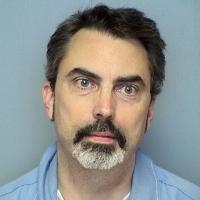
Wehmeyer pleaded guilty in 2012 to sexually abusing two brothers, ages 12 and 14. They were sons of a parish employee at Blessed Sacrament Church, where Wehmeyer served as pastor. Nienstedt appointed him to the position despite evidence of sexual misconduct in previous years. On February 1, 2013 Wehmeyer was convicted of 20 counts of child sex abuse and child pornography and sentenced to five years in prison.
Neinstedt was investigated in December 2013 for inappropriately touching a boy during a photo shoot following a confirmation ceremony in May 2009. According to the investigation, following the ceremony, the boy told his mother that Nienstedt touched his buttocks.
In a later interview with police, the accuser said that during the photograph session Nienstedt’s hand had moved down his back to his buttocks, and that he thought it was “creepy,” but did not feel violated.
After locating the photograph of the accuser with Nienstedt, police observed that the group is arranged on the stairs and the archbishop is standing one step higher than the accuser. So, it appeared that Nienstedt would have to bend to reach the boy’s buttocks and any such action would likely be witnessed by others present. Based on the investigation, the attorney’s office decided there was insufficient evidence to prosecute Nienstedt.
Nienstedt Hard on Gay Catholic Families
Archbishop Nienstedt had a reputation of being very tough on gay people, and has made homosexuality his signature issue. He famous (or infamous) for spending $650,000 on DVDs and a PR campaign to persuade Minnesota citizens to vote against same-sex marriage. (It passed). But his curt response to a Catholic mother who wrote to him in April 2010 pleading for acceptance for her gay child stands out for its utter lack of feeling:
“I write to inform you,” the letter begins, “that the teaching of the Catholic Church on homosexuality, as described in paragraphs 2357 and 2358 and 2359 of the Catechism of the Catholic Church is rooted in Scripture and based on Natural Moral Law. It, therefore, shares in God’s revelation to us. Catholics are bound in conscience to believe this teaching. Those who do not cannot consider themselves to be Catholic and ought not to participate in the sacramental life of the Church.”
“Indeed, some might find this a hard saying but many of Jesus’ teachings were likewise received as such. I urge you to reconsider the position you expressed in your letter. Your eternal salvation may well depend upon a conversation of heart on on this topic.”
I think the Archbishop meant “conversion” vs “conversation” but the end result is the same–if the mother didn’t change her views and withdraw support from her child she was facing eternal damnation.
Rumors
A gay man, Gregg Larson, confronted Archbishop Nienstedt while he was at dinner in a restaurant with another man. Larson broke Nienstedt’s marriage DVD in front of him, along with his letter requiring all Catholics to support the ban. Larson then told Nienstedt that he had heard rumors that the archbishop was a closeted gay man, saying that if the rumors were true, the prelate was a hypocrite.
The archbishop responded, “You shouldn’t believe rumors,” to which Larson allegedly retorted, “Methinks thou dost protest too much.” “And at that point he kind of raised his hand and snarled ‘Get out!’ And I responded that his behavior was unbecoming of an archbishop and that maybe we needed an exorcist here…The other priest said that we were ruining their dinner and my partner said that they were ruining people’s lives.”
Sexual Impropriety
Things began to unravel for Archbishop Nienstedt in April 2013 when Elizabeth Hasselberger resigned her post as chancellor for canonical affairs for the archdiocese. She left in frustration after Nienstedt failed to report or discipline clergy suspected of sex abuse. Hasselberger began leaking internal documents to the press that appeared to detail efforts to shield abusers.
Late in 2013 the archdiocese began receiving a series of allegations that Nienstedt had a string of improper relationships with men or had made unwanted advances on others. This was around the same time as the buttocks-touching incident surfaced.
Former chancellor Elizabeth Hasselberger believes the investigators from Greene Espel have received “ten sworn statements alleging sexual impropriety on the part of the archbishop dating from his time as a priest in the Archdiocese of Detroit, as Bishop of New Ulm, and while coadjutor and archbishop of St. Paul and Minneapolis.” She told a reporter that “he also stands accused of retaliating against those who refused his advances or otherwise questioned his conduct.” 
In a written statement, Archbishop Nienstedt responded that the allegations or nothing more than a “personal attack against me due to my unwavering stance on issues consistent with church teaching, such as opposition to so-called same-sex marriage.” He also suspects that accusers are coming forward because of “difficult decisions” he has made, but, citing privacy laws, he would not elaborate.
Questions from the Censor Liborum
1. What will Pope Francis do if Archbishop Nienstedt is found by the investigation to have harassed and threatened priests and seminarians for sex?
2. Why did it take a lay woman – Elizabeth Hasselberger – to expose a culture of moral corruption in the chancery?
3. How many times did Archbishop Nienstedt watch “Brokeback Mountain”?
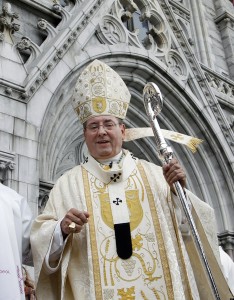 In August 2013 the Diocese of Peoria, Illinois announced that it would pay $1.35 million to settle a lawsuit by a former altar boy who accused the late Msgr. Thomas Maloney of sexually abusing him in 1995 and 1996 when he was eight years old. Archbishop John W. Myers, who was then the bishop, was also named in the suit for failing to take action against the monsignor. Myers served as bishop of Peoria from 1990-2001.
In August 2013 the Diocese of Peoria, Illinois announced that it would pay $1.35 million to settle a lawsuit by a former altar boy who accused the late Msgr. Thomas Maloney of sexually abusing him in 1995 and 1996 when he was eight years old. Archbishop John W. Myers, who was then the bishop, was also named in the suit for failing to take action against the monsignor. Myers served as bishop of Peoria from 1990-2001.
The boy’s mother said the abuse happened on to occasions while her son was helping the priest. “Maloney molested Andrew once in the church sanctuary before school, and once behind the altar after 10:30 Mass on a Sunday.”
Archbishop Myers, in a 2010 deposition in the case, said he had no knowledge of any allegations against Fr. Maloney until long after he left Peoria. Documents produced in the legal case show Myers was copied on certain memos with potentially incriminating information about Maloney, but the bishop said he didn’t see them, likely the result of a “slipshod” filing system in the diocese. “There may have been things that got by me,” Myers said. “I underscore the kind of loose system we had with the two different buildings in Peoria. It could be sometimes two weeks of copies that I would get when they moved them from building to building, and I sometimes didn’t have the time to read them.”
Notes & Letters
Bishop Myers did have the time to write personal notes to Fr. Maloney thanking him for his gifts of coin collectibles and more. Here is a sampling:
6/21/91: “I always enjoy a good visit with you. Not only is it fun, I usually learn a thing or two. I do not ever expect to “profit” from our friendship. Thank you so much for lunch and your wonderful gift.”
3/13/92: “Just a thank you note for the silver. That one is even too big for a watch fob. It could be tied around one’s neck like the proverbial “millstone.”
1/30/95: “Just a note to thank you for lunch. I do enjoy our chats. I am grateful for your gift. I will try not to lose it all at the “dogs” in Florida. From February 4 through about the 15th Al and I should be at the Gene Lamb condo on Captiva. I will put the address and phone number at the bottom of the letter.”
6/27/00: “Just a note to thank you for the wonderful dinner at Jim’s. Mark and I enjoyed it immensely. I surely hope you will join us on Crete. The hotel is Porto Elounda Mare, We’ll be arriving on August 24 and departing on August 31.” 
So were Myers and Maloney friends? “I don’t know if ‘friends’ would–I had many other priests that I was closer to. I can say that,” Myers clarified in the deposition.
Among the documents Myers claimed he didn’t see was an August 1999 letter from Msgr. Steven Rohlfs, his Vicar General, responding to a complaint by parents of a grade school student over Maloney’s conduct during confession. The boy told his parents that during confession Maloney described the sexual acts of a fellow priest in graphic detail. He took a mobile phone call in the middle of the sacrament, and conducted penance as an interrogator–Did you do X, Y Z?
Rohlfs wrote back to the parents apologizing for Maloney’s scandalous behavior, and assured them they had done the right thing in contacting him. The Vicar General copied Myers on the letter and the diocesan law firm as well.
At least one complaint about Maloney received Myers personal attention–although he could not recall it in the deposition. On September 1, 2000, a married couple from Epiphany parish wrote to Myers to complain about Maloney’s behavior both in and out of church. On Super Bowl Sunday, they explained, Maloney could be heard distributing communion in the following way: “Body of Christ. Is the beer cold yet?” Maloney’s homilies were often laced with “inappropriate jokes.” The wife explained that as she was confessing to Maloney he informed her “women are just too emotional,” adding, “maybe she should get a life.” Later that night, around 9 PM, she saw him in a Walgreen’s parking lot with a grade school girl, who eventually left the car to buy about $20 in candy. And, finally, she wrote Maloney “typically” took eighth-grade girls out to lunch at a place called the Pub.
Myers responded to the complaint in a letter dated September 14, 2000. “I’m sorry you do not approve of his (Maloney’s) approach to priestly ministry,” it begins. “Your characterization of Father’s liturgies is not generally accurate according to the responses I have received from my inquiries. The celebration of Holy Mass at Epiphany, while it may not be a formal as some parishes, is respectful and prayerful. I don’t know what to say about the other matters you mention. Basically your experience does not correspond with that of many other people. I don’t know in what context others would have said, ‘we know that Father has problems….'”
Bishop Myers concluded the letter by saying, “I know that Father loves people, especially young people, and that he cares for them generously. We have never had any allegations of impropriety.”
Off to Newark and Fr. Fugee
On October 15, 2000, upon Bishop Myers nomination, Pope John Paul II elevated Fr. Maloney to Monsignor. Nine months later the pope appointed Myers as Archbishop of Newark. He replaced the popular and social-justice minded Archbishop Theodore McCarrick, who became archbishop of Washington, DC.
Fr. Maloney retired from active ministry in 2002 for reasons of health. He died in 2009, at age 73.
As bishop in Peoria, Illinois, Myers did not come under media scrutiny. That changed when the Fr. Fugee sexual abuse scandal made the New York metropolitan newspapers.
A few months prior to Myers’ arrival in Newark, Fr. Michael Fugee, assistant pastor of the Church of St. Elizabeth in Wyckoff, was arrested and charged with criminal sexual contact.
He was accused of fondling the genitals of a 14-year-old boy during wrestling matches on two occasions. Under questioning by police, Fugee confessed to intentionally touching the teenager’s crotch over his clothes. According to the youth, Fugee pinned him down and “slowly” moved his hand over his crotch.
Prosecutors dismissed the case inf 2009 after securing an agreement with Fugee and the archdiocese that Fugee would never again minister to minors or be an unsupervised situation with them.
During the November 2009 deposition, Myers expressed disappointment that Fugee let detectives interview him without counsel. “Is it your recollection,” the plaintiff’s attorney, Jessica Arbour, asked Myers, “that he (Fugee) admitted that he touched the boy?” “Unfortunately, without his lawyer present, he did,” Myers responded.
Most Catholic parents would feel concerned and uneasy when a bishop sounds more like head defense counsel than a shepherd.
At the time time, The Star Ledger (formerly the Newark Star Ledger) intensified its coverage of Archbishop Myers, reporting on the Fugee scandal and the building of Myers’ weekend/retirement home. The New York Times followed The Star Ledger’s reporting lead and on February 14, 2013 published the devastating article, “A Church So Poor It Has to Close Schools, But So Rich It Can Build a Palace.”
For a bishop comfortable with looking the other way (or not looking at all), the media spotlight on his management and priorities was uncomfortable as it became increasingly critical. Calls by laity and media began to be made for him to step down as archbishop.
The last straw for Myers was The Star Ledger’s August 12, 2013 article, “Church pays $1.3 million in suit alleging that Newark archbishop protected abusers in Illinois.” He unloaded in a sharply-worded letter to priests in a letter dated August 15, 2013:
“in the deposition given by me and selectively quoted by an interested attorney, some upset parents, and a former Priest of this Archdiocese, I spoke under oath and truthfully about matters relating to a certain Priest. I never vacationed with him, and I received no gifts other than those often given to a bishop by Pastors or Parishes. Since we were both coin collectors, I recall that he once gave me a coin of minimal value, of which he had several examples.”
(That account of the gifting differs from what Myers said in the 2010 deposition. In the transcript he said that Fr. Maloney gave him gold coins “two or three” times. Asked if they were valuable, Myers responded, “I don’t have any idea.”)
Myers defended himself against his critics, asserting they are hostile to “our Roman Catholic Faith and its Teachings, the Teachings of which I have always been a staunch and outspoken supporter, despite their ‘unpopularity’ in the secular and ‘politically correct’ society…” “God only knows their personal reasons and agenda,” he asserted, “We are still called to love them. And God will surely address them in due time.”
Five weeks later, on September 24, 2013, Pope Francis appointed Bernard A. Hebda, formerly the bishop of Gaylord, Michigan, as Newark’s coadjutor archbishop. In effect, this means he is co-archbishop, except in ceremonial precedence. A coadjutor bishop is usually appointed when the current bishop needs significant help in his ministry. Hebda is expected to succeed Myers as archbishop of Newark when Myers retires in two years.
Myers is effectively finished as archbishop. The only thing that remains is whether or not he will be eased out before he is 75. My bet is he will be, very quietly. He was so effective at looking the other way it cannot be definitively proved he protected predator priests. But on the reverse side of that coin, Archbishop Myers has left himself open to assertions he is an incompetent administrator with poor pastoral priorities.
I was struck by the irony (or prophecy) of Myers’ thank you note for Fr. Maloney’s gift of a silver coin so large it could be “tied around one’s neck like a proverbial millstone.” “But he that shall scandalize one of these little ones that believe in me,” Jesus said, “it would be better for him that a millstone should be hanged about his neck, and that he should be drowned in the depth of the sea.” 
Off Crete or Captiva Island would be more pleasant than the near Newark.

Newark, New Jersey’s Archbishop, John J. Myer, 72, recently made the decision to expand his weekend home in anticipation of his upcoming retirement at age 75. 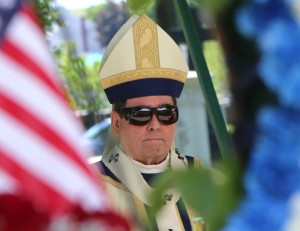
It currently has five bedrooms, an elevator, a three-car garage, and a large ameba-shaped swimming pool. It is located on 8.2 acres in one of New Jersey’s more expensive and peaceful corners in Hunterdon County. The house and property was purchased for the Archbishop as a weekend retreat in 2002 for $700,000, and is now valued at $800,000.
The new wing of the house will have an indoor exercise pool, a hot tub, library, three fireplaces, another elevator, and a “gallery” to provide a panoramic view of the grounds below.
The 3,000 square foot addition, costing over $500,000, will bring the total area of the residence to 7,400 square feet, and the total value to at least $1.3 million. Renovations do not include architect’s fees, furnishings or landscaping. They are extra.
28% of Newark’s population lives below the poverty level. The archdiocese has closed over 60 schools since 2002, due to declining enrollment and lack of money to operate them.
“The planned construction is being paid for by donations from individuals specifically given for this purpose,” stated the message on the archdiocese website, “and through the sale of properties that the Archdiocese owns but does not need.”
Obviously, the closed Catholic schools.
Jim Goodness, the spokesman for the Archdiocese, had the thankless job of trying to justify the expenditures to a furious public. He said the home extension was necessary to accommodate the bishop’s post-retirement wok, including expected frequent visits from priests, staff and other guests.
“The press said it’s a hot tub, it’s a whirlpool,” Goodness clarified. “He’s getting older–there are therapeutic issues.”
Parishioner Thomas Fitzgerald observed: “According to LifeSiteNews.com (an ultra conversation Catholic news site) on September 27, 2012, Archbishop Myers explains he is Biblically bound to preach the truth ‘in season and out of season’ and advises all the faithful to do likewise. ‘Woe to me if I do not proclaim the gospel,” he cited. Evidently this was overheard from the whir of the hot tub.”
“How did this man become a bishop?” asked Mary Healey.
Good question.
Our Lady of Medjugorje gives a message to the world on the 25th of every month. 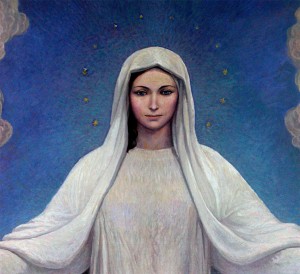
The Virgin Mary’s Message on January 25th 2014 “Dear children! Pray, pray, pray for the radiance of your prayer to have an influence on those whom you meet. Put the Sacred Scripture in a visible place in your families and read it, so that the words of peace may begin to flow through your hearts. I am praying with you and for you, little children, that from day to day you may become still more open to God’s will. Thank you for having responded to my call.”
“Is the Blessed Mother this insipid?” was my first thought after reading the above message. I combed the message archives to see if I could find another message to resonate. Nothing – everything was equally banal and sugary.
In 2010 a commission was appointed by Pope Benedict XVI to evaluate the apparitions of the Virgin Mary at Medjugorje. The commission was directed by Cardinal Camillo Ruini and held its final meeting on January 17, 2014. It sent its report to the Congregation for the Doctrine of the Faith, which will now make a recommendation to Pope Francis. The pope will announce his final verdict on the matter at some time after that. (Although he may have tipped his hand during a homily last fall.)
The apparitions that began in 1981 are said to continue regularly to this day (33 years later), attracting hundreds of thousands of pilgrims annually. Although many conversions have been witnessed in Medjugorje and countless people helped in their faith, the authenticity of the apparitions remains highly contentious.
The bishops of the Mostar-Duvno diocese, Pavo Zanic (1980-1993) and Patko Pevic (1993- ) judged it to be a fraud. “The Madonna, they say,” stated Bishop Zanic, “started to appear on the Podbrdo of Mountain Crnica, but when the militia forbade going there, she came into homes, into forests, fields, vineyards and tobacco fields; she appeared in the church, on the altar, in the sacristy, in the choir loft, on the roof, on the church steeple, on the roads, on the way to Cerno, in a car, on buses, in classrooms…” So far, the Virgin Mary has appeared to the visionaries over 12,000 times.
Medjugorje (med-you-gor-yeh) was an obscure tobacco-farming village in communist Yugoslavia (now Bosnia and Herzegovina) for much of its history, but on a scorching hot June 23, 1981, everything changed. Five teenagers and a child–Vicka Ivankovic, Mirjana Dragicevic, Marija Pavlovic and Ivan Dragicevic, all 16 Ivanka Ivankovic, 15 and ten-year-old Jakov Colo–burst through the doors of the parish church and told the priest they had seen the Virgin Mary. 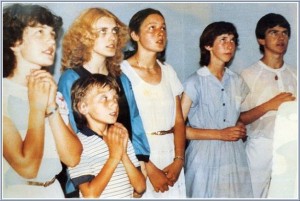 They explained they had been playing on a steep hill when they saw a woman wearing a long, flowing dress and a veil, beckoning them to her. Their first reaction was that they were seeing a ghost, but when they asked who see was, the woman described herself as “the Blessed Virgin Mary” and the “Queen of Peace.”
They explained they had been playing on a steep hill when they saw a woman wearing a long, flowing dress and a veil, beckoning them to her. Their first reaction was that they were seeing a ghost, but when they asked who see was, the woman described herself as “the Blessed Virgin Mary” and the “Queen of Peace.”
They returned to the hillside every evening where the Virgin Mary appeared at 6:40 PM–the same time they saw the first apparition. The visionaries–Vicka, Mirjana, Mirija, Ivan, Ivanka and Jakov, claim that “Gospa,” the Croatian word for “Our Lady,” has been giving them each ten secrets concerning the future of the world. These secrets are said to include miracles and worldwide events that will be sent by God to convert humanity. The daily apparitions stopped for Mirjana, Ivanka and Jakov after they had received all ten secrets. However, Ivan, Marija and Vicka still see the Virgin Mary every day. 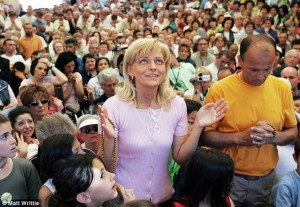
“Every apparition starts with three flashes to warn us she is coming,” said the visionary Vicka. “It’s just the same as talking to a real person, except it feels different because you exclude yourself from everything, as though you are not on Earth any more.” “At Christmas time,” she goes on, “the Virgin Mary holds the newborn baby Jesus in her arms and you can see his little feet and hands moving. She keeps covering him with her veil–but it’s not an image, I can reach out and touch them. I can touch them as though they are real human beings.”
While the bishops of Mostar were not supportive of the Medjugore apparitions, the late Pope John Paul II may have strongly believed in them. In a private conversation with visionary Mirjana (Dragicevic) Soldo the Pope said: “If I were not Pope I would already be in Medjugorje confessing.”(1987). According to the testimony of the visionaries, on May 13, 1982, the day of the assassination attempt on the Pope, Our Lady said, “His enemies tried to kill him, but I have protected him.”
The Virgin Mary also mentioned the Pope’s visit to Croatia in her August 25, 1994 message: “Dear Children! Today I am united with you in prayer in a special way, praying for the gift of the presence of my most beloved son in your home country. Pray, little children, for the health of my most beloved son, who suffers, and whom I have chosen for these times.”
After Pope John Paul’s death, the visionary Ivan saw him during an apparition with Our Lady. He appeared young and joyful.
Out of the tens of thousands of apparitions of the Virgin Mary reported throughout history, only 295 have been formally investigated and just 12 have ever been authenticated, the most recent being the apparitions of Our Lady of Laus in France, approved in 2008.
Although miracles have been recorded at most Marian apparition sites of the past, miracles are a daily occurrence in Medjugorje. A bronze statue representing the Risen Christ began seeping a watery substance. Pilgrims have reported being able to look at the sun without hurting their eyes and seeing many different things: the Host spinning in the center of the sun, the sun spinning and dancing all around, it moving closer and farther away from them, different figures around the sun, such as hearts and crosses.
One month after the beginning of the apparitions, Bishop Zanic of Mostar went to Medjugorje to question the visionaries. “I asked each of them to take an oath on the cross and demanded that they speak the truth. The first one was Mirjana Dragicevic: ‘We went to look for our sheep when at once..’ ” The associate pastor interrupted and told me that they actually went out to smoke, which they hid from their parents. “Wait a minute, Mirjana, you’re under oath. Did you go out to look for your sheep?” She put here hand over her mouth. “Forgive me, we went out to smoke,” she said. She then showed me the watch on which the “miracle” occurred because the hands of the watch had gone haywire. I took the watch to a watch expert, who said that the watch had certainly fallen and become disordered.”
During taped interviews later on, Mirjana spoke of the miracle of the watch and that initially they had gone out to search for their sheep. Seer Vicka Ivankovic kept a diary of the apparitions, including the story of the bloody handkerchief incident.
“Word spread around that there was a certain taxi driver who came across a man who was bloody all over. This man gave the taxi driver a blo0died handkerchief and he told him to “throw this in the river.” The driver went on and then he came across a woman in black. She stopped him and asked him to give her a handkerchief. He gave her his own, but she said: “not that one but the bloody handkerchief.” He gave her the handkerchief she wanted and she then said: “If you had thrown it in the river, the end of the world would have occurred now.” Vicka then wrote in her diary that they asked Our Lady if this event was true, and she said that it was, and along with this, “that man covered in blood was my son Jesus, and I (Our Lady) was that woman in black.”
“What kind of theology is this?” said Bishop Zanic. “From this it appears that Jesus wants to destroy the world if a handkerchief is thrown into a river and that it’s Our Lady who will save the world!”
One of the main advisers to the Medjugorje visionaries was the Rev. Tomislav Vlasic OFM. He presented himself to Pope John Paul II in a May 13, 1984 letter: “I am Rev. Tomislav Vlasic, the one, according to Divine Providence, who guides the seers of Medjugorje.”The Virgin Mary even mentioned him in a message: “Thank Tomislav very much. He is guiding you so well”
On September 3, 2008, Pope Benedict XVI authorized “severe cautionary and disciplinary measures” against Fr. Vlasic. He was laicized in 2009.
The ex-spiritual director of the Medjugorje visionaries has his own interesting story. In 1976 Fr. Vlasic had an affair with a Franciscan nun, Sr. Rufina. When she became pregnant, Vlasic sent her to Germany and urged her to keep his paternity a secret. She gave birth to their son in 1997. Her letters to Vlasic fell into the hands of her landlord, who sent them to a friend of his, Joseph Cardinal Ratzinger. Cardinal Ratzinger eventually become Pope Benedict XVI.
In 1981, Fr. Vlasic went to Rome to participate in an international meeting of the Charismatic movement. There he was told by Sr. Briege McKenna, in an alleged prophecy, that he would become the center of a great movement with the help of the Virgin Mary. When reports of the Marian apparitions emerged from the village of Medjugorje, Fr. Vlasic hurried there to be with the visionaries–the moment had arrived.
Fr. Vlasic eventually left Medjugorje to go to Parma in northern Italy with German laywoman Agnes Heupel. In 1987 they founded, with the help of visionary Marija Pavlovic-Lunetti, a mixed-sex community inspired by the apparitions at Medjugorje. Its name was “Queen of Peace, Totally Yours – through Mary to Jesus.” In 1988 Marija lived at the community for a few months and had her daily apparitions there. She reported that Our Lady seemingly approved Vlasic’s plans and activities with his community by the words of Our Lady: “This is God’s plan.” The same year the bishop of Parma, Benito Cocchi, obviously unimpressed, ordered the community to close, and Marija Pavlovic-Lunetti retracted her statement and support in a letter.
In 2002, an Italian woman named Stefania Caterina became vice-president of the “Queen of Peace” movement founded by Fr. Vlasic. She is better known as an author, mystic and seer. She writes about her experiences and messages from extra-terrestrial entities in the book, Bey0nd the Great Barrier, published in 2008. Her first experiences began in 1984, with “Ashtar Sheran from the planet Alpha Centuri” commander of an interplanetary powerful fleet, and then his wife, Kalna; the priest-king Aris, and others.  Stefania Caterina claims that her experiences “occur through inner locutions and visions, during which I was given explanations by the Lord himself, or his instruments, first of all S. Archangel Raphael.” The Father, Jesus, the Holy Spirit, Mary, St. Joseph, the Apostles John and Paul, St. Michael the Archangel, souls in Purgatory and “people of other planets” are also in communication.
Stefania Caterina claims that her experiences “occur through inner locutions and visions, during which I was given explanations by the Lord himself, or his instruments, first of all S. Archangel Raphael.” The Father, Jesus, the Holy Spirit, Mary, St. Joseph, the Apostles John and Paul, St. Michael the Archangel, souls in Purgatory and “people of other planets” are also in communication.
In February 2012, Stefania Caterina and Tomislav Vlasic announced on a video conference that they are part of a group called “Central Nucleus” formed by 49 beings chosen by God throughout the universe. The Central Nucleus is composed of seven great Archangels, and 18 sisters and 18 brothers of the universe,. Not all of these beings are from the Earth, and although some are deceased, they are not “dead.”
The Central Nucleus was actually announced by Saint Michael the Archangel to Stefania Caterina on September 10, 2010. Not surprisingly, St. Michael referred to the events in Medjugorje: “With the apparitions of Medjugorje, a time started in which God no longer allows for his plan to be slowed down, as unfortunately happened over the centuries. You must know, in fact, that God’s plan to recapitulate all things in Christ was to start already with the apostles, in order to transform all of humanity. This did not happen. Thus, God permitted his people to mature slowly by means of many trials and persecutions.”
“For the time in which you are living now, God has provided a powerful instrument, capable of operating in these times to encourage the renewal of God’s people and facilitate the realization of the plan of salvation.”
“We are talking about a nucleus that can be called “Central Nucleus” in the midst of God’s people which is gradually aggregating and will aggregate to itself other nuclei that are being formed everywhere in the universe. In this Central Nucleus the priesthood of the archangels and the universal communion are fully operating.”
There is no word on how the Central Nucleus is progressing in Italy or elsewhere.
Meanwhile, the Medjugorje road show has been stopped cold in the United States.
In November 2013 the Congregation for the Doctrine of the Faith prefect, Archbishop Gerhard Mueller, unsettled devotees of the pilgrimage destination when he sent an instruction to all U.S. bishops warning against allowing “seer” Ivan Dragicevic to go on a speaking tour of the country.
For years, the Medjugorje visionaries have made public appearances at churches, announcing in advance that “apparitions” will take place. Archbishop Muller called for an end to church sponsorship of these events.
In an October letter to the U.S. bishops, Archbishop Carlo Maria Vigano, the apostolic nuncio in Washington, conveyed a message from Archbishop Muller: “clerics and the faithful are not permitted to participate in meetings,conferences or public celebrations during which the credibility of such ‘apparitions’ would be taken for granted.”
In his message Archbishop Vigano reminded the bishops that the CDF is currently investigating the reported apparitions at Medjugorje. Until the pope renders a final judgement, the CDF has accepted for acceptance of a statement issued in 1991 by the bishops of what was once Yugoslavia, who said: “On the basis of research that has been done, it is not possible to state that there were apparitions or supernatural revelations.”
Although Archbishop Vigano’s letter to the U.S. bishops was not made public, the message spread quickly, including a copy of the letter which wound up on Google. It also had an immediate impact: Ivan Dragicevic, one of the “seers” was scheduled to appear at two New England parishes in late October; both events were cancelled.
The decision on Medjugorje now rests with Pope Francis. He may have given us an inkling of his opinion in the “fervorino” (informal homily) at his daily Mass on November 14, 2013. According to Vatican Radio, Pope Francis was cautioning people against excessive curiosity about the future and contrasting it with the wisdom that comes from the Holy Spirit. Curiosity, the Pope continued, impels us to want to feel that the Lord is here or rather there, or leads us to say: “But I know a visionary, who receives letters from Our Lady, messages from Our Lady.” And the Pope commented, “But, look, Our Lady is the Mother of everyone! And she loves all of us. She is not a postmaster, sending messages every day.”
Such responses to these situations, he affirmed, “distance us from the Gospel, from the Holy Spirit, from peace and wisdom, from the glory of God, from the beauty of God. Jesus says that the Kingdom of God does not come in a way that attracts attention; it comes by wisdom.”
The Censor Librorum has two questions on the Medjugorje phenomena:
1) Whose purpose did Medjgorje serve?
2) Would Pope Francis and the late Pope John Paul II have made the same decision about Medjugorje? (I think not.)
My personal opinion – while I believe that Medjugorje has helped many pilgrims to feel they are loved and cared for by Our Lady (and that is a good thing); nevertheless, people seem to have forgotten that most mystical experiences should be suspect as a ruse from Satan for the vain. Simple prayer is always to be preferred, even if ecstasy is more fun (and proftable). 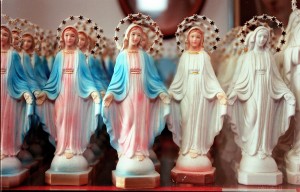

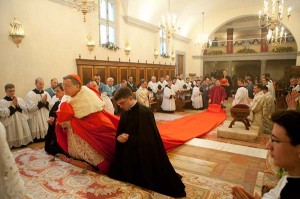
December 15, 2013: The week Pope Francis delivers a homily focusing on “A Church That Lacks Prophecy Becomes Filled with Clericalism,” is the same week that arch conservative Cardinal Raymond L. Burke was dumped off the Congregation for Bishops. He was replaced by Cardinal Donald Wuerl of Washington, DC, a moderate.
An amazing coinkydink? I don’t think so.
In his homily Pope Francis described the role of the prophet as one who carries within themselves three moments: the promise of the past, contemplation of the present and courage to show the path toward the future. The pope stressed the words of prophets are necessary, although many times they are rejected.
“When there is no prophecy in the people of God,” said Francis, “the void it leaves becomes occupied with clericalism. And it is this clericalism that Jesus asks, ‘With what authority do you do this? With what authority?’ And the memory of the promise and the hope of going forward becomes reduced to only the present: neither the past nor a hopeful future. The present is legal. If it is legal it goes forward,” the pope said.
Concluding his homily, Pope Francis prayed that in these days leading to Christmas, that there may not be a lack of prophets: “Let us not tire of moving forward! Let us not be closed in the legality that closes doors! Lord, free your people from the spirit of clericalism and help them with the spirit of prophecy.”
Amen!
On September 6, 2012, Bishop Robert Finn of Kansas City-St. Joseph, Missouri Diocese was found guilty of failing to report evidence of sexual abuse by a priest in his diocese. 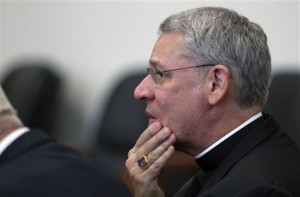
Bishop Finn is one of four Opus Dei Bishops in the United States and a hardline conservative. At a Mass for Catholic school teachers and principals for the school year beginning August 2008, Finn–still coadjutor then–admonished the teachers to help their students resist the “culture of death” and the “age of relativism.” He said: “There are objective truths. There is right and wrong. Holy Mother Church is our mother who loves us and she knows best. Catholic schools must be places where these moral truths are taught without variation and without ambiguity for the sake of souls and salvation.”
After a brief bench trial, Judge John Torrence pronounced the bishop guilty on the charge of failing to report suspected child abuse, a misdemeanor in the state of Missouri, making him the first American bishop convicted of a criminal offense for mishandling sex abuse complaints. Judge Torrence sentenced Bishop Finn to two years probation. The maximum sentence he could have received was a year in jail.
Before sentencing, Bishop Finn, 59, offered a simple apology for his role in the case. “I truly regret and am sorry for the hurt these events caused,” he said.
The bishop knew the priest, Fr. Shawn Ratigan, pastor of St. Patrick’s Church in Kansas City, was in possession of graphic images of children’s genitalia, according to court testimony. However, he did not report the priest to the police.
Bishop Finn also said he did not report concerns about Fr. Ratigan to his diocesan review board, an advisory group the U.S. bishops’ charter mandates should be present in each diocese and should be used to evaluate allegations of abuse by priests.
After Father Ratigan was arrested, Bishop Finn met with his priests. Asked why Father Ratigan was not removed earlier, the bishop replied, according to the testimony, that he had wanted “to save Father Ratigan’s priesthood” and that he had understood that Father Ratigan’s problem was “only pornography.” 
Fr. Ratigan pleaded guilty in August 2012 to federal changes of producing and attempting to produce sexually graphic material of minor girls. These included hundreds of photos focused on the girls’ crotch areas. Most photos appeared to be of girls six to ten years old, One set of “staged” photos showed a little girl, two to three years old, lying down in bed. The girl was wearing only a diaper, but with each photo, the diaper was gradually removed to expose her genitals and buttocks. Another staged photo sequence showed a sleeping seven or eight year old girl with her legs repositioned. Investigators felt the photos were disturbing and sexual in nature.
The series of missteps that ended with Bishop Finn’s conviction and Fr. Ratigan’s arrest began with a May 2010 letter from Julie Hess, the principal of St. Patrick’s School, who expressed concern about the priest’s “perceived inappropriate behavior with children,” and reported that some in the parish feared he might be a “child molester.”
The principal noted in her letter that the school community’s response to the priest’s behavior reflected the extensive training that teachers, parents, volunteers and students had received in the wake of the clergy abuse crisis. Her letter included no specific allegations of sexual abuse, Rather, as she noted, the community’s concerns were prompted by the priest’s nonsexual boundary violations in his interactions with children. Fr. Ratigan encouraged children to sit on his lap and dig in his pockets for candy. He photographed them constantly, even when they weren’t doing anything particularly photogenic. The letter also noted his refusal to abide by the personal boundaries taught to and expected by all parish employees.
Msgr. Robert Murphy, Bishop Finn’s second-in-command, summarized the contents of the principal’s letter for Bishop Finn, who did not ask to see the letter, or speak with the principal. Msgr. Murphy was a key official in deciding how the diocese responds to allegations of priestly sexual abuse.
The diocese made no effort to notify the parents and families of St. Patrick’s parish or other parishes where Fr. Ratigan had been assigned. Bishop Finn advised that he felt that notifying parents at St. Patrick’s of the photos found on the laptop “would be like yelling fire in a crowded theater.”
He said and did nothing, and Fr. Ratigan continued to have contact with parish children and families.
This is the same man who upon becoming bishop, ordered the editor of the diocesan newspaper to immediately cease publicizing columns by Notre Dame theologian, Fr. Richard McBrien. Bishop Finn commented: “Everybody seems to make a big deal out of cancelling Fr. McBrien’s column. Quite honestly, it was fairly a no-brainer for me. Fr. McBrien likes to stir the pot. He approaches things with a certain skepticism and cynicism. You can get them in a lot of places, so go get it somewhere else. We need clear expressions of the meaning of faith, why we believe and how we can inspire each other.” Catholic publications, he said, must be “dependable in their fidelity.”
In mid-December 2010, Fr. Ratigan’s laptop was turned into diocesan officials after a computer technician found disturbing photos of children on the hard drive. After reviewing the photos, Ms. Julie Creech, the head of the diocesan’s technology department, told Msgr. Robert Murphy, vicar general for the Kansas City-St. Joseph diocese, to call the police.
Msgr. Murphy did not contact the authorities, but instead called a police captain who is a member of the diocese’s independent review board and described a single photo of a nude child that was no sexual in nature. Without reviewing the photo, the captain said he was advised that although such a picture might meet the definition of child pornography, it probably wouldn’t be investigated or prosecuted.
About a year and a half later, in May 2012, Msgr. Murphy told police Fr. Ratigan’s laptop had contained hundreds of photos. The stipulated facts also state that in testimony, Murphy reported the incident to police because he thought the diocese’s response to Fr. Ratigan was “moving along with no direction, and I thought, ‘I have to do something.'” ![Murphy[1]](https://nihilobstat.info/wp-content/uploads/2012/10/Murphy1.jpg)
According to the facts, Msgr. Murphy also testified Bishop Finn was “upset” upon hearing Msgr. Murphy had reported Fr. Ratigan. At the time, Msgr. told his sister, “I think I made a decision that will not make the bishop happy.”
When the news broke, local Catholics were outraged. The diocese organized “listening sessions” to manage the public reaction, and had participants engage in an exercise where they were instructed to write down a “hurt” and then write down a “hope.” Among the “hurts” written down by angry parents: “The images of my daughter’s private areas that the FBI showed me, they are forever burned into my brain…Shawn Ratigan was in my house, around my children in February, and I thought my children were completely SAFE!!”
Local Catholics took to the airwaves and web, too, setting up a Facebook page “Bishop Finn Must Go”, and commenting on blogs and newspapers. One woman named Ginger wrote: “I’ve followed this story since the beginning, and as a pro-lifer and a Catholic, I am mightily offended when people suggest poor Archbishop Finn is persecuted by the press because they are pro-aborts and he piously fought against stem cell initiatives. With friends such as Archbishop Finn, the pro-life movement needs no enemies. Men such as he who proclaim to be so pro-life out of one end of their mouths and then turn a blind eye to the sexual exploitation of children cause the bile to rise to my throat. No wonder the “liberal press” goes after these hypocrites with a vengeance. For pre-born life to matter so much when post-born children matter so little is sad indictment of the hierarchy. It shouldn’t come as a surprise that such despicable behavior on the part of ardent pro-life supporters casts shame upon us all.”
After his conviction, there were numerous calls for Bishop Finn to resign or be removed. Many people strongly argued that if Pope Benedict removed a bishop for supporting the ordination of women, he surely must do the same for a bishop convicted of protecting a sexual predator of little girls and toddlers.
I am of two minds on whether or not on whether Bishop Finn should be removed. On one hand, if we do believe terrible experiences can change people for the better, then Bishop Finn may end us as one of the vigilant bishops in protecting children and teens from clerical sexual abuse. He will certainly not want to go through this scrutiny, shame and public pillorying again. He will be forced to revisit, over and over again, why he made the choices he did and the hurt, pain and suffering they have caused, and diminished trust and faith in the institution and its leaders.
On the other hand, Bishop Finn is now totally neutralized as a conservative spokesman for the church. He will be reminded of Fr. Shawn Ratigan every time he opens his mouth. He will be reminded of how he chose protecting himself and a fellow conservative priest over safeguarding children and parish families. He will be reminded of who and what he put first. His crediblity as a spiritual shepherd is virtually nil. Very few will pay attention of who he insinuates they should vote for.
But maybe now that Bishop Finn is lying down in the “foul rag and bone shop of the heart” as the Irish poet, Yeats, described it, he will climb up a purified and changed man.
The words from his “Warriors for the Victory of Life” keynote address on April 18, 2009 can give Bishop Finn a simple caution and way to follow:
“Every day the choice is before us: right or wrong; good or bad; the blessing or the curse; life or death. Our whole life must be oriented toward choosing right, the good, the blessing, choosing life. If you and I fail to realize the meaning and finality behind our choices, and the intensity of the constant warfare that confronts us, it is likely that we will drop our guard, be easily and repeatedly deceived, and even lose the life of our eternal soul.”
This spring has seen a rash of coal mining accidents and disasters. Companies are in a hurry to get coal out the ground to feed the manufacturing demand for energy.
An accident at the Wangjialing Mine in northern China killed 38 men; an explosion in the Raspadskaya mine in western Siberia killed 66, with 100 injured and 44 still missing.
On April 5, 2010 29 miners were killed at the Upper Big Branch Mine in Montcoal, West Virginia. The mine is owned and operated by Massey Energy Co., headquartered in Richmond, VA. 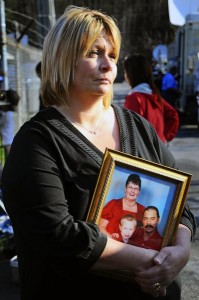
In the wake of an April 5th explosion, Bishop Michael J. Bransfield of Wheeling-Charleston, West Virginia, issued a pastoral letter on May 1 on mine safety in West Virginia.
In his letter, On My Holy Mountain, the bishop noted mine disasters in West Virginia: the April 5, 2010 Upper Big Branch Mine explosion, the Monongah Mine disaster of 1907 that killed 362 people and the Sago Mine disaster of 2006 that killed 13 miners.
A common thread: lax or disregarded safety regulations in order to speed production.
“The disaster at the Upper Big Branch Mine,” the bishop stated, “raises concerns about the conditions within the coal mines across our state and the atmosphere existing in the coal industry’s corporate culture.”
“The church has an obligation to continue to remain vigilant in these areas to ensure that justice is served and human dignity protected. This is an essential part of proclaiming the Gospel of life.”
“Indeed, by virtue of human dignity, all persons have the right to a safe work environment and one in which unsafe conditions can e reported without fear of blacklisting or losing one’s job. Workers have the right to a living wage and to reasonable work hours. The church has long recognized and supported workers’ rights to organize. In the coalfields such organization has had measurable benefits in terms of safety, and we applaud all that the United Mine Workers of America have achieved.”
“We must discover why union mines have a lower fatality rate in West Virginia and appear to have a much better safety record.”
A long-time coal miner who spent the last 15 years at the Massey Energy Co. mine where 29 workers were killed in April said it was a “ticking time bomb” due to high levels of methane gas.
Stanley “Goose” Stewart, who was 300 feet into the mine when he felt a “hurricane strength” wind from the blast, was the first worker at the Upper Big Branch mine to testify publicly about conditions there.
Mr. Stewart, who has been a coal miner for more than 30 years, started keeping a notebook to document his working conditions when the ventilation system was changed last July. “With so much methane being liberated, and no air moving, it gave me the feeling of a ticking time bomb.” In July 2009 he wrote: “finding explosive levels of methane gas regularly.”
Gary Quarles, whose only son, Cary Wayne Quarles, was killed in the accident, said miners weren’t allowed to hang ventilation curtains or conduct any other safety operations if there would interfere with or delay the production of coal.”
Joe Main, the head of the federal Mine Safety and Health Administration told a Senate committee investigating the explosion that Massey thwarted stiffer enforcement action, such as closing down mines with a history of safety violations, by filing a series of appeals. He called on Congress to free up funds to help clear up a backlog of challenges filed by companies.
Mr. Main said Massey escaped tougher enforcement by contesting 78% of the $13.5 million in fines by MSHA in 2009. There are more than 16,000 cases pending review involving 89,000 violations.
Massey Energy CEO, Don Blankenship, denied his company tried to “game the system.” “Rather,” he said, “we are exercising our rights to due process under the system Congress has put in place.”
The issue of mine safety hits close to home with Amber Helms-Chambers and her brother, Nick Helms. Their father, Terry Helms, died in the 2006 Sago Mine explosion.
Chambers is an employee of the Wheeling-Charleston Diocese. She helped design the graphics and layout for the pastoral letter, On My Holy Mountain.
“Our uncles that are in the coal mines and our friends are still in the coal mines and I have a cousin going in the coal mines so it is really important to us to work for something that I know my dad was so passionate about as well and working on it just makes me feel that I’m doing my part as a designer doing what I can to help get thoughts out there and help out,” said Chambers.
“Coal-mining laws are written in blood”…”I never understood that saying until after Sago,” Nick Helms said. “Dad would say nothing would ever change until after something bad would happen. It’s a never-ending struggle, but it needs to be a never-ending topic in our government.” 
“People were saying, ‘It’s cheaper to pay the fines than to do the safety.’ I know you need to make money, but not at the expense of people’s lives.”
The bishops of Appalachia in their 1975 pastoral letter, This Land is Home to Me recognized that “the coal-based industry created many jobs and brought great progress to our country,” said Bishop Bransfield.
“They also frankly acknowledged that ‘oppression for the mountains’ and suffering for many resulted from tragedies like the Upper Big Branch Mine disaster. And they warned that the temptation toward ‘maximization of profit’ can lead to a disregard for human beings and their needs and lead to ‘a new kind of powerlessness.'”






























![Murphy[1]](https://nihilobstat.info/wp-content/uploads/2012/10/Murphy1.jpg)

